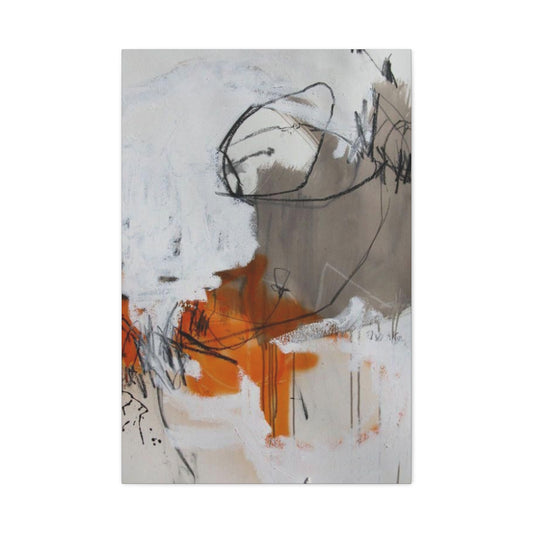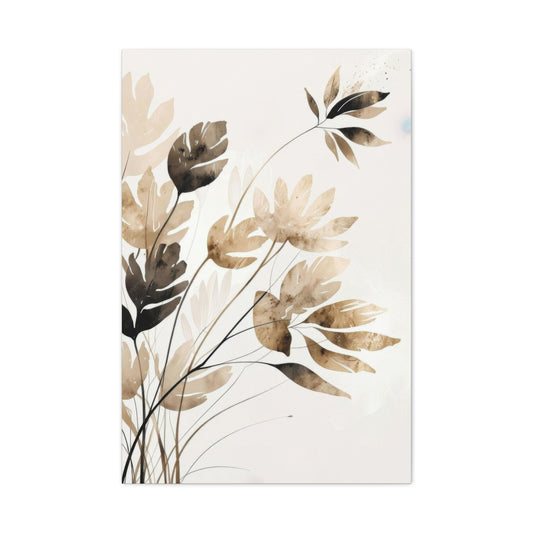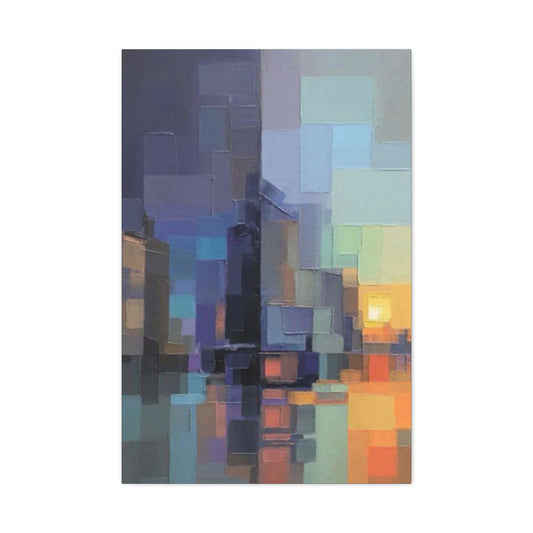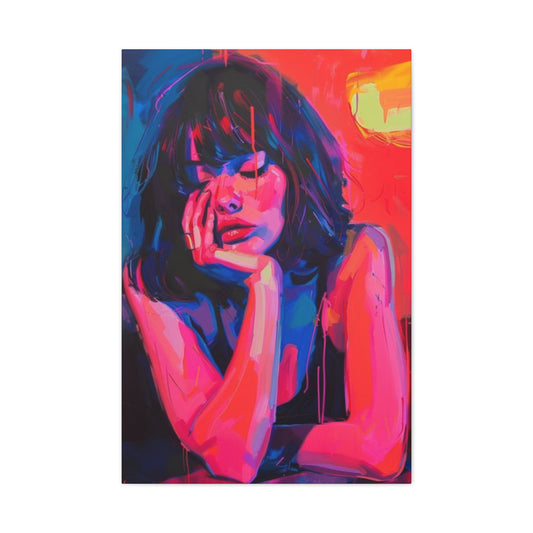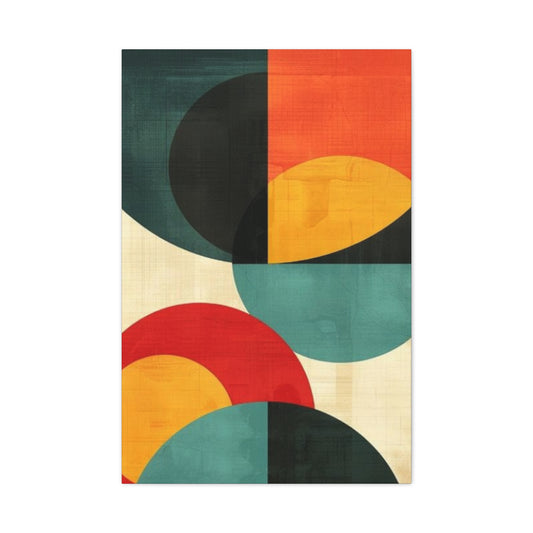The evolution of residential interior design continues its perpetual metamorphosis, unveiling innovative aesthetic philosophies that fundamentally reshape our understanding of domestic environments. As we navigate through contemporary design landscapes, homeowners find themselves immersed in unprecedented opportunities to create living spaces that transcend traditional boundaries while embracing revolutionary concepts that harmonize functionality with artistic expression.
Modern interior design movements represent more than superficial stylistic preferences; they embody profound shifts in lifestyle priorities, environmental consciousness, and technological integration that reflect our collective adaptation to changing social dynamics. These emerging trends demonstrate sophisticated understanding of psychological comfort, sustainable living practices, and personalized spatial experiences that cater to diverse individual needs while maintaining universal appeal.
The contemporary design revolution encompasses multifaceted approaches that challenge conventional wisdom while introducing innovative solutions for common residential challenges. From space optimization techniques to material selection strategies, these evolving trends provide comprehensive frameworks for creating environments that support both daily functionality and long-term satisfaction through thoughtful integration of aesthetic principles with practical considerations.
Professional designers increasingly recognize that successful residential environments must accommodate diverse lifestyle requirements while maintaining coherent aesthetic narratives that reflect personal identity and cultural values. This holistic approach ensures that interior design choices support overall well-being while creating visually compelling spaces that inspire creativity, promote relaxation, and facilitate meaningful social interactions within domestic settings.
The intersection of technological advancement with traditional craftsmanship creates unprecedented opportunities for customization and personalization that previously remained accessible only to luxury markets. Contemporary homeowners benefit from democratized access to sophisticated design tools, premium materials, and professional-grade installation techniques that enable transformation of ordinary spaces into extraordinary residential experiences.
Environmental sustainability considerations permeate every aspect of modern design decision-making, from material sourcing practices to energy efficiency implementations that reduce ecological footprints while maintaining aesthetic excellence. These conscious choices reflect growing awareness of environmental responsibility while demonstrating that sustainable practices enhance rather than compromise design quality and residential satisfaction.
Embracing Thermal Minimalism as the Foundation of Contemporary Living
The concept of thermal minimalism marks a significant evolution in the minimalist design philosophy, focusing on creating spaces that are not only simple and clean but also warm, inviting, and psychologically nurturing. Unlike its traditional counterpart, which often leaned heavily into stark whites, grays, and industrial materials, thermal minimalism incorporates a deeper sense of comfort and warmth. The aim is to cultivate an environment that maintains simplicity yet provides emotional and physical warmth, making it suitable for modern living where comfort, tranquility, and aesthetic simplicity must coexist.
Thermal minimalism builds upon the essential elements of minimalist design—clarity, functionality, and simplicity—while expanding these principles to embrace organic textures, natural materials, and softer color palettes. In doing so, it seeks to create a space that feels both serene and welcoming. This style represents an evolution of minimalist principles, where design is not about austere restraint but about fostering a sense of home and calm through thoughtful material selection and color choices.
The Warmth of Colors in Thermal Minimalism
In the context of thermal minimalism, the importance of color cannot be overstated. Where traditional minimalism favored cold, neutral tones like whites, blacks, and grays, thermal minimalism shifts the focus toward a warmer palette that promotes comfort and a sense of safety. Colors like soft creams, beiges, and muted golds form the foundation of this aesthetic, creating a warm and welcoming atmosphere that does not overwhelm the senses.
The subtle use of gold and amber tones imbues spaces with a radiant glow, adding a layer of psychological warmth that helps soften the edges of a minimalist interior. These colors, in contrast to the starkness of traditional minimalist interiors, evoke feelings of peace and emotional security. They have a unique ability to reflect natural light, amplifying its presence in the room, and make spaces feel inviting and balanced. These warmer hues also offer versatility, making it easy to personalize a space while still adhering to the minimalist ethos of restraint.
Additionally, warm tones can be easily paired with a variety of natural materials and textures, ensuring that the room maintains its serene, balanced feel. For instance, soft beige walls can be paired with walnut wood furniture, creating a seamless blend between color and texture that aligns with the principles of biophilic design. This combination not only enhances the aesthetic appeal of the room but also provides tactile experiences that contribute to the overall feeling of comfort and well-being.
Natural Materials and Textures as Key Elements
The selection of materials is central to the concept of thermal minimalism, and it is through this careful material curation that the design achieves both warmth and sophistication. Materials such as natural wood—walnut, oak, and cherry—play a vital role in bringing depth and warmth to minimalist spaces. These wood types, with their varied grain patterns and deep hues, evoke the natural world, connecting indoor spaces to the outdoors in a subtle yet powerful way.
In contrast to the cold, metallic finishes that have historically been associated with modern minimalism, natural wood introduces a tactile, organic quality that enhances the space's ability to nurture its inhabitants. The grains and textures of the wood offer both visual and physical depth, making each piece of furniture or architectural detail a functional and artistic addition. Wood, with its natural variation and warmth, is also incredibly versatile, able to complement other materials such as stone, glass, or concrete, all while maintaining a consistent commitment to natural simplicity.
Beyond wood, other materials like stone, wool, linen, and cotton contribute to the tactile richness of a thermal minimalist space. Stone surfaces—whether in countertops, flooring, or feature walls—create a grounding effect, while the softness of linen and wool textiles adds comfort without overwhelming the space. These materials align with the principles of biophilic design, which emphasizes the connection between nature and humans, and serve to elevate the minimalist ethos with natural beauty and craftsmanship.
The Role of Textiles in Thermal Minimalist Design
In thermal minimalism, textiles are not merely decorative; they serve as essential components that add warmth, texture, and depth to a space. Handwoven fabrics, natural fibers, and artisanal craftsmanship are key elements in this design philosophy, enhancing the overall visual experience while still maintaining simplicity and restraint. The role of textiles goes beyond softening the aesthetic; they provide a tactile layer that makes the space feel more lived-in, human, and comfortable.
Throw pillows, blankets, and rugs, when chosen with care, can significantly impact the warmth and coziness of a room. For example, a plush wool rug in a rich terracotta hue or a handwoven linen throw can add subtle variations of texture and color to an otherwise monochrome or neutral scheme. These textiles introduce patterns and contrasts that enliven the space while preserving its minimalist spirit.
The careful selection of fabrics and textiles can also improve the sensory experience of a room. Soft, breathable fabrics like cotton and linen contribute to an overall sense of comfort and well-being, enhancing the room’s inviting atmosphere. Furthermore, textiles with varying textures—such as a smooth linen cushion paired with a textured wool throw—create visual interest without detracting from the minimalist design ethos.
Multifunctionality and Space Efficiency in Thermal Minimalism
Another core tenet of thermal minimalism is the efficient use of space, which is accomplished through multifunctional furniture that serves more than one purpose. In thermal minimalist interiors, every piece of furniture is carefully chosen for its utility and design integrity, ensuring that it not only looks aesthetically pleasing but also contributes to the overall functionality of the space.
For example, a sleek, modular sofa can serve both as seating for a living area and as additional storage space. Similarly, multifunctional tables—such as expandable dining tables or folding desks—allow homeowners to make the most of limited space without compromising on design. Storage ottomans, built-in shelving, and hidden compartments help maintain an uncluttered, calm atmosphere, essential in creating a space that promotes mental clarity and relaxation.
In smaller homes or apartments, where space is often at a premium, multifunctional furniture is especially valuable. The design of each piece is purposeful, allowing for greater adaptability and functionality while maintaining the simplicity that defines thermal minimalism. This approach enables homeowners to embrace a minimalist lifestyle without sacrificing comfort or convenience.
Psychological Benefits of Thermal Minimalism
Thermal minimalism offers more than just an aesthetically pleasing environment; it also provides significant psychological benefits. Spaces designed with warmth, simplicity, and natural materials can reduce stress, enhance focus, and improve overall well-being. The calming effect of a warm, uncluttered space promotes relaxation and mental clarity, helping individuals cope with the demands of modern life.
In a world that is often filled with overstimulation and clutter, thermal minimalism offers a retreat—a space where every element serves a purpose and contributes to a peaceful, harmonious environment. By focusing on what truly matters, such as comfort, warmth, and emotional balance, these spaces encourage residents to live mindfully, appreciating the simplicity and beauty of their surroundings.
Moreover, the use of natural materials and warm colors helps promote a sense of safety and security. Earth tones, tactile surfaces, and soft, organic textures create an environment that nurtures emotional well-being, fostering feelings of connection to the earth and the people within the space.
The Role of Lighting in Thermal Minimalism
Lighting is an essential component of thermal minimalism, as it plays a critical role in shaping the atmosphere of the space. In thermal minimalist interiors, natural light is prioritized, with large windows or strategically placed mirrors helping to maximize daylight and create an airy, open feel. However, lighting is also supplemented with warm artificial light sources that enhance the materials' textures and contribute to the overall sense of coziness.
The use of soft, warm lighting fixtures—such as sconces, pendant lamps, or floor lamps with dimming capabilities—adds to the inviting nature of the room. The placement of these light sources is also important, as strategic lighting can eliminate harsh shadows and create an atmosphere of warmth and intimacy. Lighting can also serve as a way to highlight specific features in the room, such as a piece of artwork, a textured wall, or a statement piece of furniture, without disrupting the minimalist aesthetic.
The careful balance of natural and artificial lighting is key in thermal minimalist design. During the day, the space feels light and airy, while at night, the warm, soft lighting creates an intimate, soothing ambiance—perfect for winding down after a long day.
Cultivating Individualized Design Narratives Through Personal Expression
Contemporary interior design increasingly prioritizes individual expression over adherence to prescribed stylistic formulas, encouraging homeowners to create unique environmental narratives that reflect personal history, cultural background, and lifestyle preferences. This personalized approach results in distinctive residential experiences that resist standardization while maintaining professional design quality and aesthetic sophistication.
The integration of diverse design elements from multiple stylistic traditions creates eclectic environments that tell compelling personal stories through carefully curated object collections, artwork selections, and furniture combinations. These individualized spaces demonstrate sophisticated understanding of how different design languages can coexist harmoniously when unified through thoughtful color coordination and proportional relationships.
Custom furniture design and bespoke storage solutions address specific functional requirements while expressing personal aesthetic preferences through unique form interpretations and material selections. These individualized elements ensure optimal space utilization while creating distinctive focal points that distinguish personal residences from generic commercial environments.
Collection display strategies transform personal belongings into curated exhibitions that celebrate individual interests and experiences while contributing to overall interior design coherence. Professional arrangement techniques ensure that meaningful objects enhance rather than overwhelm residential environments through strategic placement and appropriate scaling considerations.
Color palette development based on personal preferences rather than trending formulas creates more authentic and satisfying residential environments that support long-term satisfaction and emotional connection. These individualized chromatic schemes reflect personal psychology while maintaining visual harmony through sophisticated understanding of color theory and proportional balance.
The incorporation of family heirlooms, travel souvenirs, and artisanal acquisitions creates layered narratives that evolve over time while maintaining design integrity through thoughtful integration strategies. These personal elements provide emotional grounding while contributing to unique aesthetic identities that cannot be replicated through commercial design packages.
Technology integration within personalized design schemes accommodates individual usage patterns and preferences while maintaining aesthetic considerations that prevent technological elements from dominating residential environments. Smart home systems, entertainment configurations, and workspace arrangements reflect personal lifestyle requirements while supporting overall design objectives.
Bohemian Freedom and Artistic Liberation in Residential Environments
Bohemian design philosophy celebrates creative freedom and artistic expression through deliberately unconventional approaches that prioritize personal satisfaction over traditional design rules. This liberating aesthetic movement encourages experimentation with pattern combinations, color relationships, and textural contrasts that create visually dynamic environments supporting creative thinking and emotional expression.
The foundation of bohemian aesthetics rests upon layered complexity that builds visual interest through accumulated elements rather than singular statement pieces. This additive approach results in rich, textured environments that reward detailed exploration while maintaining overall compositional balance through intuitive arrangement strategies and natural color harmonies.
Textile layering represents a fundamental bohemian technique that combines diverse patterns, textures, and cultural traditions through rugs, throws, cushions, and wall hangings that create warm, inviting environments. These fabric combinations demonstrate global influences while providing tactile comfort and visual variety that reflects well-traveled perspectives and cultural appreciation.
Artistic integration encompasses original artwork, handcrafted objects, and vintage discoveries that contribute to unique environmental personalities while supporting creative communities and sustainable consumption practices. These curated selections reflect personal taste development while creating conversation focal points that facilitate social interaction and cultural exchange.
Indoor plant integration within bohemian environments extends beyond decorative purposes to create living ecosystems that promote air quality improvement and psychological well-being while adding organic movement and seasonal variation to residential spaces. These botanical elements provide natural color variation and textural contrast while supporting sustainable living practices.
Furniture selection within bohemian schemes emphasizes comfort over formal presentation through oversized cushions, floor seating arrangements, and relaxed configurations that support casual lifestyle patterns and social gathering preferences. These comfortable arrangements prioritize human comfort while maintaining visual interest through diverse material combinations and cultural influences.
Lighting approaches within bohemian environments utilize warm, diffused sources including candles, lanterns, and fabric-shaded fixtures that create intimate atmospheric conditions supporting relaxation and creative activities. These lighting strategies avoid harsh illumination while providing adequate task support through layered lighting schemes and flexible arrangement options.
Revolutionary Open Layout Concepts for Enhanced Social Connectivity
Contemporary residential design increasingly embraces open layout configurations that eliminate traditional room divisions while creating flexible environments supporting diverse activity patterns and social interactions. These expansive spatial concepts reflect changing lifestyle preferences that prioritize family connectivity and entertaining capabilities over formal room designations and privacy boundaries.
The successful implementation of open layout designs requires sophisticated understanding of spatial flow patterns, activity zoning strategies, and visual continuity techniques that maintain functional organization while preserving spatial generosity. Professional planning ensures that elimination of walls enhances rather than compromises residential functionality through thoughtful furniture placement and circulation optimization.
Multifunctional furniture selection becomes critical within open environments where individual pieces must serve diverse purposes while maintaining aesthetic coherence across expanded visual fields. Modular seating systems, expandable storage solutions, and transformable surfaces demonstrate innovative approaches to space utilization that support contemporary lifestyle flexibility requirements.
Visual zoning techniques including area rugs, lighting schemes, and furniture groupings create implied boundaries that define activity areas without physical barriers. These subtle demarcation strategies maintain spatial openness while providing psychological comfort through defined territories that support specific functional requirements and behavioral patterns.
Glass partition integration provides optional privacy solutions that preserve visual connectivity while accommodating occasional separation needs for work activities, private conversations, or noise control requirements. These transparent barriers maintain spatial generosity while offering functional flexibility that adapts to changing daily requirements and social circumstances.
Color coordination across open environments requires careful planning to ensure visual harmony while allowing for activity-specific variations that define different functional zones. These chromatic strategies create subtle transitions that guide visual flow while maintaining overall design coherence across expanded spatial areas.
Acoustic management within open layouts addresses potential noise challenges through strategic material selections, furniture arrangements, and sound-absorbing elements that maintain comfortable communication levels while preventing activity conflicts. These acoustic solutions ensure that spatial openness enhances rather than compromises residential comfort and functionality.
Artisanal Renaissance and Handcrafted Excellence in Modern Homes
The contemporary appreciation for handcrafted objects and artisanal techniques represents a meaningful counterbalance to mass-produced consumer culture while supporting creative communities and preserving traditional skills. This artisanal renaissance enriches residential environments through unique objects that carry cultural significance and demonstrate human creativity while providing distinctive aesthetic experiences.
Do-it-yourself crafting activities have experienced remarkable resurgence as homeowners seek creative outlets and personalized home enhancement projects that provide satisfying accomplishment while reducing commercial consumption. These hands-on activities range from simple decorative projects to complex furniture construction that demonstrates individual creativity while developing practical skills.
Handwoven textiles including rugs, wall hangings, and fabric art introduce textural variety and cultural authenticity to residential environments while supporting traditional craft communities and sustainable production practices. These artisanal elements provide visual interest and tactile experiences that mass-produced alternatives cannot replicate while contributing to unique environmental personalities.
Ceramic and pottery integration adds organic forms and earthy textures that connect residential environments with natural materials and human creativity. These handcrafted objects range from functional dinnerware to sculptural art pieces that demonstrate appreciation for traditional techniques while supporting contemporary ceramic artists and maintaining cultural craft traditions.
Macrame and fiber art techniques create distinctive wall treatments and hanging installations that add dimensional interest while demonstrating traditional rope and cord manipulation skills. These textile sculptures provide opportunities for personal creative expression while contributing to bohemian and artisanal design aesthetic that celebrates handmade beauty and cultural heritage.
Local artisan support through commissioned works and craft fair acquisitions strengthens community connections while ensuring unique residential elements that cannot be replicated through commercial sources. These relationships between homeowners and local creators foster cultural appreciation while providing distinctive design solutions that reflect regional identity and artistic traditions.
The integration of artisanal elements requires careful balance to avoid overwhelming residential environments while ensuring that handcrafted objects receive appropriate prominence and appreciation. Professional placement strategies highlight artisanal beauty while maintaining overall design coherence and functional accessibility throughout daily residential use.
Biophilic Integration and Natural Environment Connection
The systematic incorporation of natural elements within residential environments addresses fundamental human needs for environmental connection while providing practical benefits including improved air quality, stress reduction, and enhanced psychological well-being. Biophilic design principles guide strategic integration of living systems that support both aesthetic objectives and healthy lifestyle goals.
Indoor plant selection encompasses diverse species that thrive within residential conditions while providing varied visual textures, seasonal changes, and air purification capabilities. These botanical elements range from dramatic statement plants to subtle accent species that contribute to layered natural environments supporting multiple sensory experiences and psychological benefits.
Living wall installations and vertical garden systems maximize plant integration within limited floor space while creating dramatic focal points that demonstrate commitment to sustainable living practices. These sophisticated growing systems provide extensive plant capacity while maintaining manageable maintenance requirements through automated watering and nutrient delivery technologies.
Natural material integration including wood, stone, bamboo, and cork provides tactile connections with organic environments while demonstrating sustainable material choices that reduce environmental impact. These material selections offer distinctive aesthetic qualities while supporting health-conscious residential environments that minimize synthetic chemical exposure and promote natural living practices.
Water feature integration including fountains, aquariums, and reflecting pools introduces natural sound elements and visual movement that create calming environmental effects while supporting humidity regulation and acoustic management. These aquatic elements provide sensory variety while demonstrating sophisticated environmental design integration within residential contexts.
Seasonal adaptation strategies accommodate changing natural cycles through rotating plant displays, seasonal decoration schemes, and outdoor living space integration that extends residential environments into garden and landscape areas. These cyclical approaches maintain year-round natural connections while providing variety and seasonal celebration opportunities.
Natural lighting optimization through strategic window treatments, skylights, and light-conducting systems maximizes beneficial daylight exposure while supporting circadian rhythm regulation and energy efficiency objectives. These lighting strategies demonstrate understanding of natural light's psychological and physiological benefits while reducing dependence on artificial illumination sources.
Trending Elements and Contemporary Style Preferences
Contemporary residential design celebrates specific elements that reflect current aesthetic preferences while demonstrating sophisticated understanding of proportion, color theory, and material relationships. These trending components provide opportunities for style updates that refresh residential environments without requiring comprehensive renovation or major investment commitments.
Printed upholstery fabrics introduce pattern variety and visual interest while demonstrating confidence in bold design choices that move beyond neutral safety zones. These fabric selections range from geometric abstractions to organic motifs that reflect personal style preferences while providing opportunities for seasonal updates through removable covers and accessory changes.
Round and irregular mirror shapes replace traditional rectangular formats while providing expanded reflection capabilities and softened geometric influences. These curved reflective elements contribute to organic design themes while serving practical functions including light amplification and spatial expansion effects that enhance residential environments.
Fluted surface treatments including tiles, wood panels, and decorative elements add textural interest and dimensional variation while demonstrating appreciation for geometric pattern and shadow play effects. These ridged surfaces provide sophisticated detail that elevates simple materials while creating visual interest through light and shadow interaction.
Pendant lighting featuring spherical and organic forms replaces angular fixture designs while providing focused task illumination and decorative focal points. These suspended elements demonstrate contemporary lighting design trends while offering flexible placement options that adapt to changing furniture arrangements and activity requirements.
Rounded furniture edges and organic form integration create safer, more comfortable residential environments while reflecting contemporary preferences for softened geometric influences. These curved design elements demonstrate sophisticated manufacturing techniques while providing psychological comfort through elimination of sharp corners and aggressive angles.
Large-scale artwork installation creates dramatic focal points that anchor residential environments while demonstrating commitment to artistic appreciation and cultural engagement. These significant art pieces provide opportunities for personal expression while contributing to sophisticated residential environments that support intellectual and emotional stimulation.
Contemporary Style Elements to Embrace and Avoid
The strategic adoption of current style preferences while avoiding dated elements ensures that residential environments remain fresh and relevant while demonstrating sophisticated design awareness. These conscious choices reflect understanding of design evolution while preventing premature obsolescence through thoughtful selection of enduring versus trendy elements.
Vibrant color integration replaces previous neutral dominance through strategic accent applications that energize residential environments without overwhelming spatial balance. These bold chromatic choices demonstrate confidence while providing opportunities for personal expression through carefully planned color relationships and proportional applications that maintain visual harmony.
The movement away from gray-dominated schemes reflects desire for warmer, more emotionally engaging residential environments that support psychological well-being through positive color psychology applications. This chromatic evolution demonstrates understanding of color's psychological effects while embracing more optimistic and energizing aesthetic approaches.
Sustainable material preferences increasingly influence selection decisions as environmental consciousness becomes integral to contemporary design philosophy. These responsible choices demonstrate commitment to ecological stewardship while often providing superior aesthetic qualities and long-term durability that justify initial investment premiums through extended service life and reduced replacement requirements.
Modular kitchen systems continue gaining popularity through their functional flexibility and customization capabilities that address diverse lifestyle requirements while maintaining professional aesthetic standards. These systematic approaches provide cost-effective solutions while ensuring optimal space utilization and long-term adaptability to changing needs and technology integration requirements.
The elimination of heavy metallic accents and excessive ornamentation reflects preferences for cleaner, more refined aesthetic approaches that emphasize material quality over decorative complexity. This simplified approach demonstrates sophistication through restraint while creating timeless environments that resist stylistic obsolescence and maintain long-term appeal.
Contemporary lighting preferences favor integrated solutions and natural illumination over dramatic fixture statements that may quickly appear dated. These subtle approaches provide superior functionality while supporting overall design objectives through complementary rather than competing aesthetic contributions that enhance rather than dominate residential environments.
Sustainable Innovation and Future-Forward Thinking
The integration of sustainable practices within contemporary interior design reflects growing environmental consciousness while demonstrating that ecological responsibility enhances rather than compromises aesthetic excellence. These forward-thinking approaches establish new standards for residential development that balance environmental stewardship with personal comfort and satisfaction requirements.
Recycled and upcycled material integration provides distinctive aesthetic opportunities while reducing environmental impact through creative reuse of existing resources. These innovative applications demonstrate design creativity while supporting circular economy principles that minimize waste generation and resource consumption throughout residential development and maintenance processes.
Energy-efficient lighting systems including LED technology and smart controls reduce operational costs while providing superior illumination quality and customization capabilities. These technological implementations demonstrate understanding of long-term cost benefits while supporting environmental objectives through reduced energy consumption and extended component service life.
Low-emission material selections including formaldehyde-free finishes, natural fiber textiles, and organic compounds create healthier residential environments while demonstrating commitment to occupant well-being and environmental responsibility. These material choices provide superior indoor air quality while often offering enhanced durability and aesthetic performance characteristics.
Water conservation systems including efficient fixtures, greywater recycling, and drought-resistant landscaping reduce resource consumption while maintaining residential functionality and aesthetic appeal. These conservation measures demonstrate environmental responsibility while providing long-term operational cost benefits and reduced infrastructure dependence.
Renewable energy integration including solar panels, geothermal systems, and energy storage capabilities provides independence from conventional utility systems while reducing environmental impact and operational costs. These technological implementations demonstrate commitment to sustainable living while providing practical benefits and increased property value through enhanced energy efficiency.
Waste reduction strategies including composting systems, recycling integration, and minimal packaging preferences support sustainable lifestyle practices while maintaining residential convenience and aesthetic standards. These systematic approaches demonstrate comprehensive environmental commitment while providing practical benefits through reduced waste disposal costs and environmental impact minimization.
Professional Integration and Design Implementation
The successful implementation of contemporary design trends requires professional expertise and systematic planning approaches that ensure optimal results while avoiding costly mistakes and stylistic miscalculations. Professional design consultation provides valuable guidance through complex decision-making processes while ensuring that trend adoption enhances rather than compromises residential functionality and aesthetic coherence.
Space planning optimization addresses specific residential requirements while accommodating contemporary style preferences and lifestyle needs. Professional analysis ensures efficient space utilization while maintaining visual appeal and functional accessibility throughout daily use patterns and long-term residential satisfaction requirements.
Material selection expertise provides guidance through complex option evaluation while considering durability, maintenance requirements, aesthetic compatibility, and budget constraints. Professional consultation ensures optimal material choices that provide long-term satisfaction while meeting immediate aesthetic and functional objectives within realistic investment parameters.
Color coordination strategies address complex chromatic relationships while ensuring visual harmony across diverse residential environments and lighting conditions. Professional color consultation provides confidence through scientifically informed decisions that create desired emotional effects while maintaining aesthetic sophistication and long-term appeal.
Installation coordination ensures proper implementation of design elements while maintaining quality standards and safety requirements throughout construction and installation processes. Professional project management prevents costly errors while ensuring timely completion and optimal results that meet design specifications and performance expectations.
Budget optimization strategies balance aesthetic aspirations with realistic financial constraints through strategic priority establishment and phased implementation approaches. Professional planning ensures maximum impact through efficient resource allocation while maintaining quality standards and long-term satisfaction objectives throughout residential development processes.
Quality assurance protocols ensure that implemented design elements meet professional standards while providing expected performance characteristics and aesthetic results. Professional oversight prevents substandard installation and material defects that could compromise design objectives or require costly remediation throughout extended residential use periods.
The evolution of contemporary interior design continues reflecting our collective adaptation to changing lifestyle requirements while embracing innovative solutions that support both individual expression and environmental responsibility. These emerging trends provide comprehensive frameworks for creating residential environments that enhance daily life while demonstrating sophisticated understanding of aesthetic principles and practical functionality requirements.











